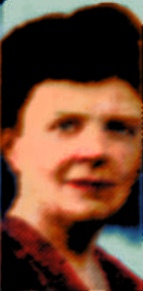3,568 bodies found –
Half of Japs on Iwo Island knocked out
Marines 1½ miles from north coast
GUAM (UP) – Field dispatches said today that U.S. Marines have knocked out half the Jap garrison of 20,000 in battling across both Iwo’s airfields to within a little more than a mile and a half of the north coast.
A Jap Domei dispatch said the Marines opened a “major offensive against our main positions” in Central and Northern Iwo Monday following an all-night bombardment by Nary guns. “Sanguinary battles” were said to be raging.
Marine planes were already operating from the southern airfield, captured a week ago. The northern up of the central airfield still was in Jap hands, but it was under artillery fire from a newly-captured hill dominating the area.
3,568 Japs slain
Adm. Chester W. Nimitz, commander of the Pacific Fleet, announced that 741 more Jap bodies had been counted on Iwo, bringing the number of known enemy dead to 3,568 for the first eight days of battle.
However, as many more enemy dead probably still remained behind enemy lines, United Press writer Mac R. Johnson, aboard the invasion flagship off Iwo, said 10,000 Japs were believed dead or seriously wounded.
Maj. Gen. Graves B. Erskine’s 3rd Marine Division advanced 400 yards – four times the length of a football field – at the center of the line in bloody fighting yesterday. By dusk, the Marines had seized high ground of the 342-foot-high central plateau and most of the central airfield, Motoyama No. 2.
May split Jap lines
The 4th Marine Division on the eastern flank and the 5th Division on the west also scored new gains. The 4th Division captured Hill 382 near the east coast, dominating a major portion of the remaining enemy-held territory to the north.
The 3rd Division was only a little more than a mile and a half from the north coast and was threatening to split the enemy defenses.
An advance of another half mile to the north would cut both remaining lateral roads between the east and west coasts. though both flanks still could communicate over mountain trails.
Enemy resistance was mounting as the Marines steadily compressed the territory remaining in Jap hands. The Japs stepped up their artillery and rocket fire and Adm. Nimitz reported a “very heavy volume” of small arms fire. Some of the Japs were fighting from concrete pillboxes with walls four feet thick.
The bitterness of the fighting was shown in part by the fact that only nine Jap prisoners have been taken.
Mop-up on Suribachi
Marine observation planes began operating from the southern airfield, Motoyama No. 1, yesterday while Seabees still were repairing the runways.
South of the airfield, mopping-up operations continued around Mt. Suribachi.
Little enemy fire fell on the interior of the American beachhead and supplies and equipment flowed ashore in increasing quantities as road and beach conditions improved.
Carrier planes strafed targets in and around Chichi in the Bonin Islands just north of Iwo. A small merchant vessel was sunk, two medium merchant ships were set afire, one plane on the ground was burned and oil storage facilities were destroyed.
Iwo’s fall predicted in few more days
ABOARD ADM. TURNER’S FLAGSHIP OFF IWO JIMA (UP) – Lt. Gen. Holland M. Smith, commanding general of Marine forces in the Pacific, predicted today that Iwo Island will fall in a matter of days.
“We expect to take this island in a few more days,” Gen. Smith said.
He was in high spirits after making a long tour of the American-held portion of Iwo Jima.
